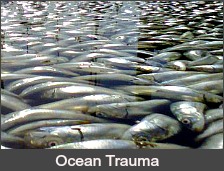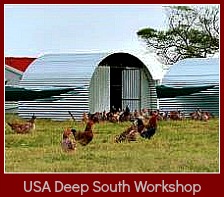A Worm Farm-organic wealth
A worm farm – a way to harvest black gold - is a great way for individuals like you and me to get an organic garden going!
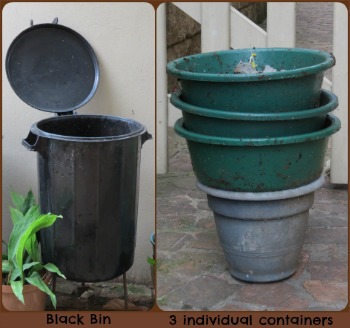
I bought my worm bin 8 years ago and put it in a shady place outside my back door. It makes it easy to tip vegetable peelings and leftovers (not tomato, onion, meat or fat drippings though) into the bin.
Some worms live in the soil, improving soil conditions but the ones I started off buying from a local resident, were Eisenia fetida or red wrigglers that make compost out of organic waste.
The castings or compost that these worms produce has up to 10 times more nutrients in it than ordinary soil and in a form more readily available to plants, which is good news for your veggies! Everything that passes through the gut of an earthworm is coated with beneficial microbes and bacteria which continue to break down organic matter into plant-available nutrients and also suppress the growth of pathogens. This means healthy soil and healthy plants.
Starting my Worm Farm
My worm farm container is a black circular bin into which up to 4 containers with holes in their bottoms and spacers between them can be added. At the bottom of the bin is an outlet with a jug underneath. I tip the bin slightly by putting a stone in the appropriate position beneath one of its legs so that the worm wee or vermi-tea can drain out of the bin into the jug.
Shredded wet newspaper or eggbox is an excellent bed for the first container. Then mix some kitchen waste like fruit or vegetable peelings - paw paw, sweet potato, beetroot, carrot, coffee grounds, teabags, crushed egg shells (in moderation) and anything past its best e.g. cucumber, marrows, lettuce, etc.
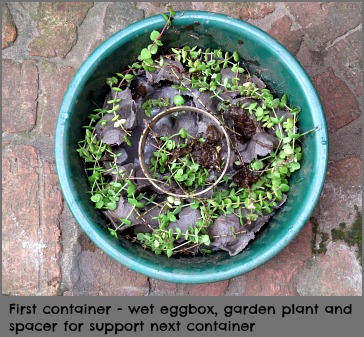
Consider some garden weeds and even leaves of succulent plants - not bitter ones though. I have a thinnish creeper-type one (see below) that my worms love. I stop it from spreading beyond its allotted range by giving it to my worms!
NB. I have a larger bin for organic waste that the worms can’t cope with. It is the regular compost - making bin. Excess waste that is unsuitable for either bin goes in a blue garden waste bag for municipal recycling.
Be careful at first but allow yourself to experiment cautiously. Don't overfeed your worms too much of a good thing!
For example, about 3 years ago I gave my worms some slices of watermelon skins and they were fine until I overfed them. Lying for days within the warmth of the black bin, the skins fermented and I nearly killed the whole worm farm. At the time the farm had grown to more than 7 thousand worms and I think I was lucky to save 300-400. I was quite devastated and it was not a pretty sight. For any creature more substantial I would have been had up for animal abuse.
I cover the top of each container with egg-boxes that have been soaked in water. In time the worms will eat this too. Under normal circumstances the worms will thrive and multiply speedily providing vermi-tea regularly that I pour on my plants like liquid fertilizer. I water it down to about 5% but no matter what strength I've used, I've never known it to burn or damage them.
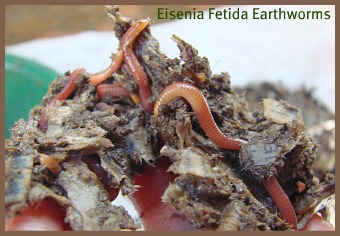
When the first container is about 6 centimeters deep with vermi-compost or I find the worms climbing out or climbing down to the floor of the bin, its time to put in my next container. It starts off the same as the first. The individual containers shouldn't get too full as these worms need an aerated environment. When the vermi-compost is friable (crumbly) it is ready to be removed and used in the garden.
As the numbers of worms increase I eventually use all the internal containers.
This is what I do then... I gently tip the containers out onto a sack on my back verandah every 6 weeks or so and leave them for about 20 minutes. Upending the containers exposes the worms and they all dive from the light. When I return, I slowly keep skimming the compost off the top and eventually (it really doesn’t take that long – about 30 minutes!) they’re all tangled up together on the sack floor.
"Good neighbours come in all species!" Sally Wasowski - Botanical Missionary
I meanwhile have washed the containers and prepared them to redistribute the worms into them. Starting the process all over again using wet shredded newspaper or thoroughly water-soaked egg-boxes, I add a little bit of the vermi-compost and some soft vegetable material. Treats for the worm farm are pumpkin, over-ripe avocado or banana which I often give them at this time.
I'm not squeamish about handling my worms. If you are feeding them correctly there is no bad smell whatsoever. I sort through the compost diligently to remove all the worms. Unless you are constantly replenishing soil with organic material that is kept damp these particular worms will not survive in soil. They require organic matter for food.
Most people might not take the time to get all the worms out of the vermi-compost they will put in the garden but I like to do this. You will also notice shiny little oval beads in the compost - these are eggs. I rescue as many as I can of worms and eggs transferring them to a newly prepared container. I find groups of babies hardly thicker than a hair!
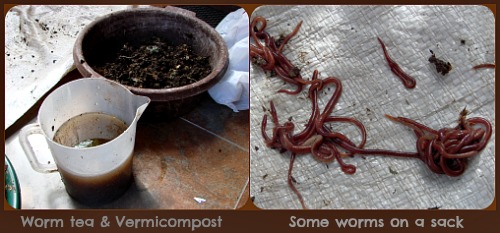
I find that I can put the worms back into one less container than those I emptied as they're all starting from scratch and are not full of waste as you begin again.
I put in my fourth container at the bottom of the existing ones as they start to full up and my worms move down ending up on the bin floor.
I always handle the worms gently, showing them respect. The work such humble creatures do is amazing!
If I go away for a couple of weeks, I buy some pumpkin or butternut, cut it into halves/quarters and turn it skin side facing up into each container (so the hollow faces down). I find this provides enough for the worms while I am away.
I also arrange to have a friend check on them to make sure they're okay. If for any reason I'm away for longer, I might take them to a friend's house who has agreed to look after them there. Fortunately the worm farm is easily portable in its bin and its not high maintenance for someone to care of.
Earthworm Research
Research into earthworms has revealed that they convert the waste products they ingest into beneficial nutrients when they excrete them. David Murphy states in "Earthworms of Australia" that “The actual numbers of benevolent bacteria in soil due to the presence of earthworms can exceed 2 500 000 per gram in over 100 different soil types.”
The Recycled Organics Unit at the University of New South Wales, Australia has used earthworms to recycle large scale waste efficiently and has produced a book called “Best Practice Guidelines to Managing Vermiculture Technologies,” which would be an ideal blueprint for South African Municipalities to consider being environmentally friendly and cost effective…..
Ukranian authorities have used vermiculture to render harmless wastes from fruit and vegetable canning factories, milk plants, and bakeries.
This would be a reasonable option for South African Municipalities to implement. It is a practical and economical way to rid towns and cities of their garbage by presenting it to worm farms that would convert it into superb compost for gardens and cultivated lands.
It substantially improves the quality of soil effectively giving back to Mother Nature in an unprecedented way. In the process, cities would become cleaner and landfills would reduce. Everything except glass, plastic and metal can be fed to the worms which is for the most part, anyway recyclable. It would also create job opportunities.
Worm farms have been used to restore the damaged soil to a status suitable for organic farming at Chernobyl where on 26 April 1986 the worst nuclear accident in history occurred at the Chernobyl power station in the former Soviet Union close to the border between the Ukraine and Belarus. More than 135,000 people and 35,000 cattle living within 30 kilometres of the damaged nuclear reactor had to be evacuated after which an unprecedented "zone of exclusion" was established around the site.
Nature was abandoned to cope as best it could. In the 90’s worm farms were introduced to the damaged region. It was found that earthworms, by encapsulating and sweating out through pores on their backs indigestible pathogens and toxic substances, rendered them harmless to the environment.
Such worm farms could be used on larger scales to help us deal with hospital waste products and the like. I shudder to think of some of mankind’s hazardous waste that is going into landfill.
How amazing is it that simple innocuous worms have within them the ability to render harmless many dangerous man-made products and if used judiciously can go a long way to restoring the damage we have wrought on our natural environment.

Links to Related Sites


In many countries, working worms are being lavished with care and concern, usually reserved for a treasured car or favourite pet. The question is why?





